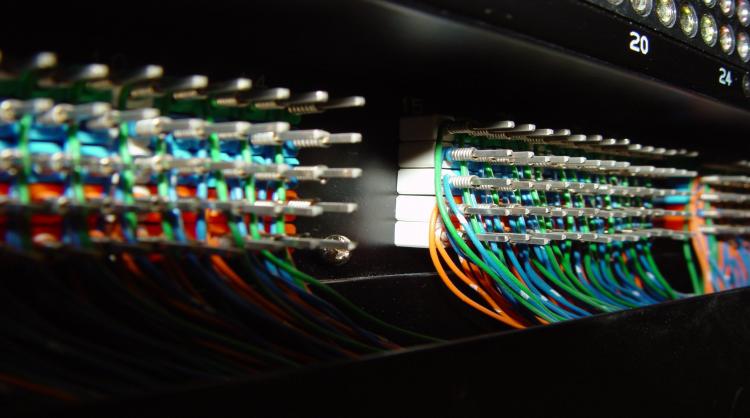FCC Settles Price Cap ILEC Tandem Transport Access Issue
March 23, 2018 | by Andrew Regitsky

Last year's ILEC Annual Access Filings brought a lot of confusion to the industry. It was Year 6 in the transition to bill –and-keep for most terminating switched access charges, and it was an important step for the tandem-switched transport rates of price cap ILECs.
According to part 51.907(g)(2) of the FCC's rules, effective July 1, 2017, price cap ILECs were required to:
Establish, for interstate and intrastate terminating traffic traversing a tandem switch that the terminating carrier or its affiliates owns, Tandem-Switched Transport Access Service rates no greater than $0.0007 per minute.
The rule was very controversial. Access customers claimed that the rule required that the $0.0007 tandem-switched transport rates should apply to all a price cap ILEC’s affiliates including CLEC and CMRS providers. However, in their annual filings, price cap ILECs assessed the $0.0007 rate only when tandem switching and transport traffic terminated to a price cap carrier end office, but not when such traffic terminated to the end office of an affiliate that was not itself a price cap carrier, including affiliated CLEC or wireless end offices.”
The Commission seemed to accept this interpretation of the price cap ILECs when it let their 2017 access charge revisions take effect despite complaints.
We conclude that none of the parties filing petitions against the tariff transmittals at issue have presented compelling arguments that the transmittals are so patently unlawful as to require rejection. Similarly, we conclude that none of the parties have presented issues regarding the tariff transmittals that raise significant questions of lawfulness which require their investigation. (FCC Public Notice, July 7, 2017).
Even while it rejected the claims of access customers, the Commission failed to provide a rationale for its decision. This failure led to a Level 3 filing a formal complaint against AT&T. In its Complaint, Level 3 argued that the “clear and unambiguous” terms of Section 51.907(g)(2) require AT&T to apply the $0.0007 per minute rate when a non-price cap carrier affiliate of AT&T (including a wireless (CMRS), VoIP, or competitive LEC affiliate) terminates traffic that traversed a tandem owned by an AT&T Price Cap Carrier. Specifically, the term “affiliates” in Section 51.907(g)(2) “comes into play whenever an AT&T Price Cap Carrier owns the tandem and any AT&T affiliate is the ‘terminating carrier.’”
In its defense, AT&T claimed that the rule applies only to price cap carriers that are also “the terminating carrier”—i.e., the carrier that actually terminates the call to the end user and thus owns the end office switch. AT&T maintained that this is clear from both the text of the regulation and the Access Transformation Order.
On February 12, 2018, the FCC released a Memorandum Opinion and Order in Docket 17-227 in which it agreed with the interpretation of AT&T (and price cap ILECs that agreed with AT&T). The Commission stated:
[W]e find that AT&T’s interpretation is more reasonable...[W]e note that the phrase “or its affiliates” refers to the owner of the tandem switch (“traversing a tandem switch that the terminating carrier or its affiliates owns”)—not to the identity of the terminating carrier. Although the Commission did not explain the reason for including “affiliates” in the rule, we note that its inclusion serves to bar a price cap carrier from evading the required rate reductions by transferring its tandem assets to an affiliate. In any event, the Commission clearly knew how to include affiliates within the scope of this rule, and did so only with respect to the ownership of the tandem switch. Moreover, the rule is intended to address terminating traffic only by a “Price Cap Carrier.” That term is defined by Section 51.903(f) by reference to the definition set forth in Section 61.3,38 which encompasses local exchange carriers—not their CMRS affiliates. Thus, we hold that Section 51.907(g)(2) requires price cap carriers to set a tariff of no more than $0.0007 for all traffic that terminates with the price cap carrier and that traverses a tandem switch owned by the price cap carrier or its affiliates. Specifically, we find that the rule applies only in situations where a “Price Cap Carrier” is “terminating traffic” and the price cap carrier (or its affiliate) also owns a tandem switch that the traffic traverses. (Memorandum Opinion and Order, pp. 5-6).
The Commission's decision should prevent any confusion when price cap ILECs reduce their tandem-switched transport rates to bill-and-keep on July 1, 2018. It should be clear that the $0.00 rate will apply only when the ILEC owns the tandem and is also terminating the traffic to the end user.
Remarkably, despite the industry confusion about this issue that lingered for years, the Commission now claims that in the Access Transformation Order, it always established a separate process to transition the tandem-switched transport access elements for CMRS and VoIP-terminated calls to bill-and-keep.
The agency states that addressing these and other reforms require it to define the point at the “network edge” where bill-and-keep applies, and, thus, when a “carrier is responsible for carrying . . . its traffic to that edge.” Unfortunately, since seven years later, we are still waiting for the Commission to define the "network edge", it acknowledges that it has not yet established tandem switching and transport rate reductions for traffic that traverses the tandem switch of a price cap carrier but is terminated by a third party. Thus, we are in year seven of the move to bill-and-keep and many fundamental access issues remain unresolved. Great job, FCC!

